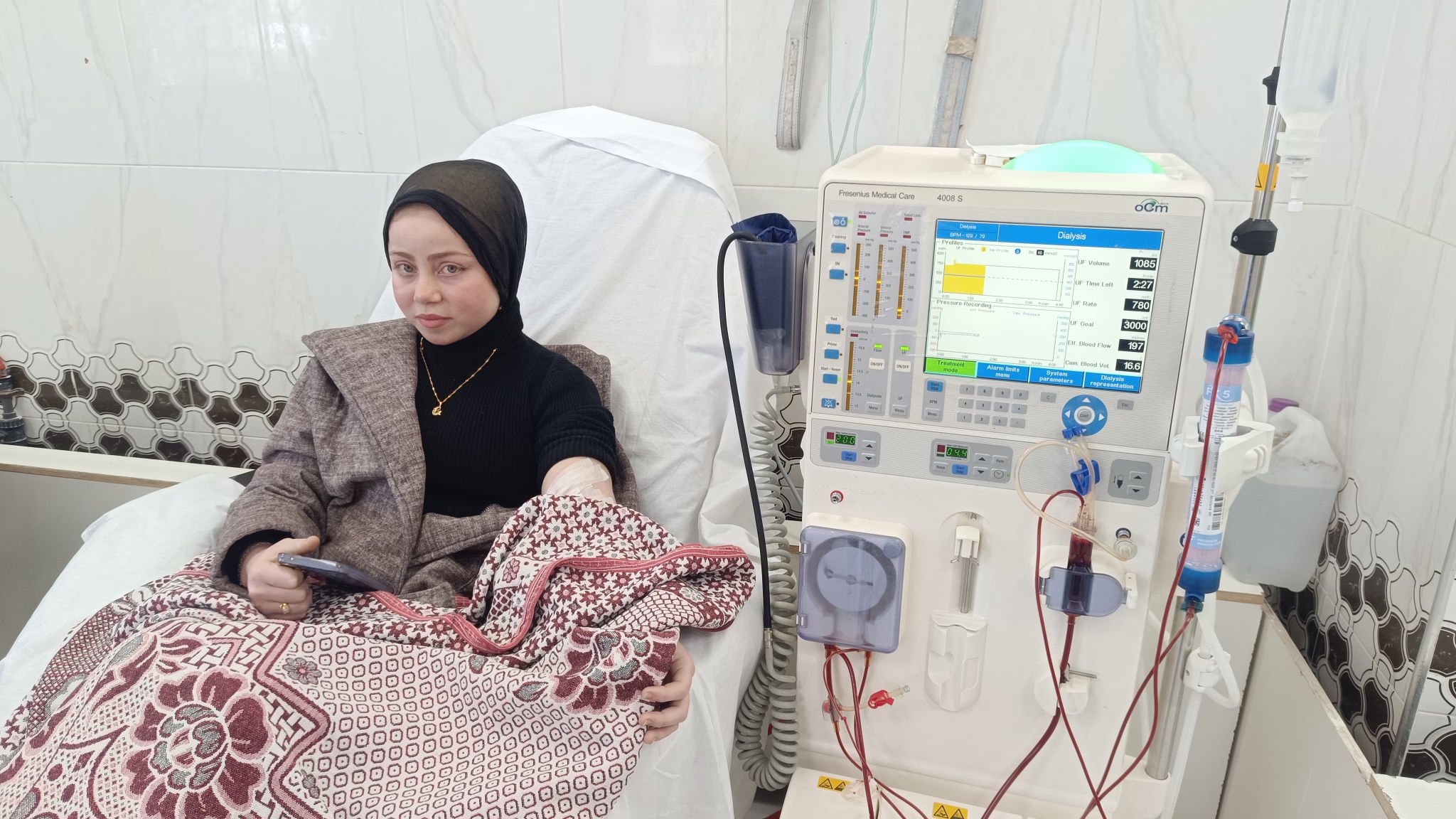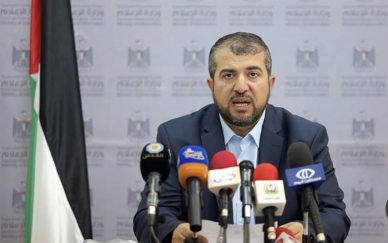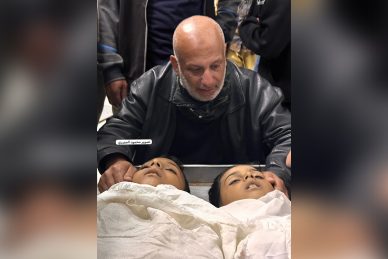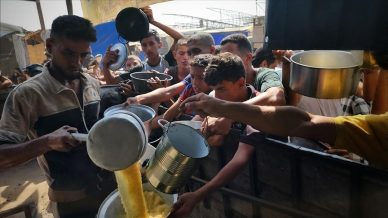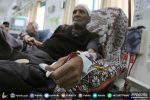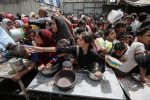GAZA, (PIC)
Children suffering from kidney failure at the Al-Rantisi Children’s Hospital are fighting for survival, undergoing dialysis sessions amid harsh conditions and a severe lack of medical resources. This is a result of the destruction inflicted by the occupying army on hospitals during the genocide and the blockade imposed on Gaza Strip.
Inside the dialysis room, exhausted children lie on beds connected to dialysis machines that extract toxins from their frail bodies to compensate for the loss of kidney function. Their faces appear pale, and their eyes anxiously await the end of the process, which lasts three hours and is interspersed with physical pain.
Near her child’s bed, a mother sits holding his small hand, whispering prayers in an attempt to calm her troubled heart, while the nurse presses the machine’s buttons to begin the four-hour procedure.
In another corner, another child gazes at the ceiling with glazed eyes, as if his few years of life have felt much longer due to the extreme pain and suffering he endures in this hospital, which has become a permanent battleground for survival.
Vital department
Dr. Jamil Suleiman, the director of Al-Rantisi Hospital, says that this department is one of the vital areas providing specialized services for children in public hospitals, as it is the only one offering medical care for children with kidney disease under 14 years old in northern Gaza.
He explains that the department was reopened after being closed for over a year, starting to accommodate sick children in need of this vital care, operating with 6 machines out of the 14 that served the hospital before the genocide.
Suleiman, citing data published by the Health Ministry on its Facebook page, notes that 45 children with kidney failure used to visit the hospital for treatment three times a week. “However, due to the partial destruction caused by the war to the department, services were temporarily halted, resulting in the death of many children due to the lack of medical sessions and necessary resources, in addition to the difficulties in transferring patients elsewhere due to Israeli incursions and continuous shelling.”
The hospital director mentions that the department currently receives only 12 children on two shifts, noting that efforts are underway to renovate the other area of the department to increase the number of service recipients to 24 patients, while some children who were receiving treatment before the war have been transferred abroad to reduce health risks.
Dr. Nabil Ayad, head of the kidney department at Al-Rantisi Hospital, says that the department faces a severe shortage of essential medical supplies, particularly pediatric blood catheters, which are necessary for performing dialysis sessions.
The hospital also suffers from a critical shortage of medications and necessary medical materials, exacerbating the suffering of children and their families.
Ayad called on international health organizations to provide urgent support to the health system in the Strip to help it overcome this ongoing crisis.
Since October 7, 2023, the occupying army, with American support, has destroyed 34 out of 38 hospitals, including governmental and private ones, leaving only 4 hospitals functioning with limited capacity despite being damaged, amid a severe shortage of medicines and medical equipment, according to the latest statistics from the Government Media Office (GMO) in Gaza.
The war has also rendered 80 health centers completely out of service, along with the destruction of 162 other medical institutions.
The crime of the blockade
For his part, Salama Ma’arouf, head of the GMO in Gaza, said, “The crime of the occupation continues by besieging the Strip and preventing the arrival of aid in various forms, including fuel.”
He added in a recent post on X that this blockade has led to the complete shutdown of hospitals and health centers, threatening the lives of thousands of patients and injured individuals.
He also pointed out that this situation causes the cessation of municipal services and ambulance movements, in addition to disrupting sewage treatment stations, which exacerbates the humanitarian crisis in the Strip.
The occupying authorities halted the entry of humanitarian aid into the Strip last Sunday, amid local and human rights warnings of catastrophic consequences affecting vulnerable groups of women and children.
Israeli media reported that the occupying government intends to start implementing a plan to escalate measures against Gaza within a week, including cutting electricity and water, carrying out assassinations, and forcibly displacing Palestinians from northern Gaza to the south, as well as resuming the war.
On March 1, 2025, the first phase of a ceasefire agreement, which began on January 19, was concluded, mediated by Qatar and Egypt with U.S. support.
The head of the occupying government, Benjamin Netanyahu, has blocked the start of the second phase of the agreement, as he wishes to secure the release of more Israeli prisoners without fulfilling the commitments of this phase, particularly ending the war and completely withdrawing from Gaza.
Netanyahu claims that Hamas refuses to respond to a U.S. proposal for a temporary ceasefire during Ramadan and the Jewish Passover, justifying his use of the internationally prohibited weapon of starvation by preventing the entry of humanitarian aid into Gaza since March 2.
He seeks to extend the first phase of the exchange deal to release as many Israeli prisoners as possible in Gaza, without offering anything in return or completing the military and humanitarian obligations imposed in the agreement during the past period, in appeasement of the extremists in his government.
However, Hamas rejects this, demanding that Israel comply with what was stipulated in the ceasefire agreement and calling on mediators to immediately initiate negotiations for the second phase, which includes Israeli withdrawal from the Strip and a complete cessation of the war.
With U.S. support, Israel has committed genocide in Gaza between October 7, 2023, and January 19, 2025, resulting in more than 160,000 Palestinian deaths and injuries, most of whom are children and women, and over 14,000 missing persons.

